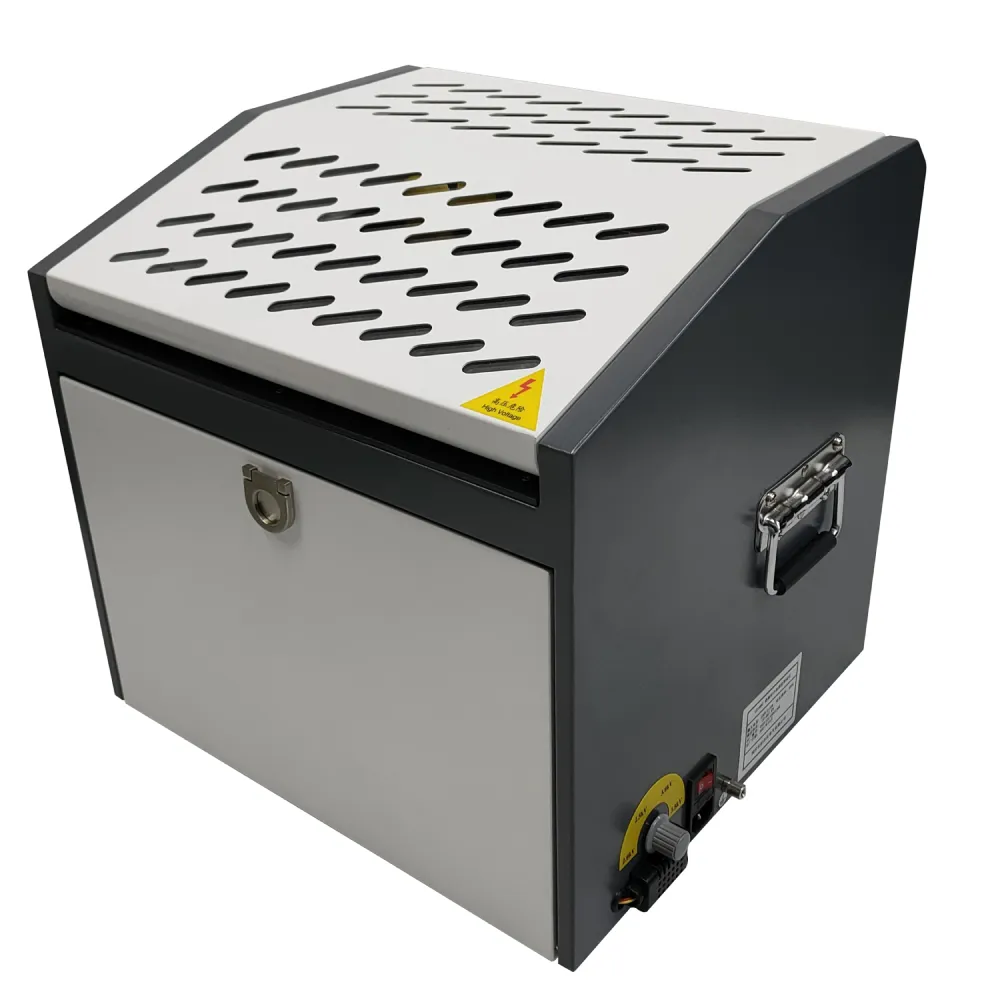 English
English


gas liquid chromatography machine
Understanding Gas-Liquid Chromatography Machines Principles and Applications
Gas-liquid chromatography (GLC) is a powerful analytical technique widely employed in chemical analysis, particularly for separating and analyzing compounds in complex mixtures. At the heart of this technique is the gas-liquid chromatography machine, an instrumental setup that enables scientists and researchers to harness the principles of chromatography for various applications.
The Principle of Gas-Liquid Chromatography
Gas-liquid chromatography operates on the fundamental principle of partitioning. In this method, a mobile gas phase (often an inert gas like helium or nitrogen) carries the analyte— the sample mixture—through a stationary liquid phase, which is typically coated onto the surface of a solid support material inside a column. As the sample travels through this column, different compounds in the mixture interact differently with the stationary phase, depending on their chemical properties, such as polarity and volatility.
The time it takes for a compound to travel through the column and reach the detector at the other end is known as the retention time. This characteristic retention time is crucial for identifying the compounds in the mixture. The separation is enhanced by the differences in boiling points lower boiling point compounds will elute faster than higher boiling point ones.
Components of a Gas-Liquid Chromatography Machine
A typical gas-liquid chromatography machine consists of several key components
1. Carrier Gas Supply An inert gas, such as helium or nitrogen, is used as the carrier gas, providing the medium for sample transport through the column.
2. Sample Injection System This component is responsible for introducing tiny amounts of the sample mixture into the system.
3. Column The heart of the GLC system, the column is packed with a stationary liquid phase coated onto a solid support. The column can vary in length, diameter, and the nature of the stationary phase, depending on the desired resolution and the types of analytes being separated.
4. Temperature Control Adequate control of the column temperature is essential, as it affects the volatility of the compounds and their interaction with the stationary phase.
gas liquid chromatography machine

5. Detector Once the separated compounds exit the column, they pass through a detector, which generates signals proportional to the concentration of each compound. Common types of detectors used in GLC include flame ionization detectors (FID) and thermal conductivity detectors (TCD).
6. Data Analysis Software Modern GLC machines are equipped with sophisticated software that aids in data acquisition, processing, and analysis, allowing users to interpret the results and identify the compounds present in the sample.
Applications of Gas-Liquid Chromatography
Gas-liquid chromatography has a vast array of applications in various fields
1. Environmental Analysis GLC is extensively used to detect pollutants in air, water, and soil samples. It helps in monitoring environmental contamination and assessing compliance with regulatory standards.
2. Food Industry In the food and beverage sector, GLC is vital for analyzing flavor compounds, preservatives, and contaminants. It ensures product safety and quality control.
3. Pharmaceuticals GLC plays a critical role in pharmaceutical research and quality control. It assists in the analysis of active pharmaceutical ingredients (APIs) and the identification of potential impurities.
4. Petrochemical Industry GLC is used to characterize complex mixtures of hydrocarbons in crude oil and refined products, facilitating the optimization of refining processes and the quality control of fuels.
5. Forensic Science In forensic laboratories, GLC aids in the analysis of substances such as drugs, toxins, and explosives, proving crucial in criminal investigations and legal proceedings.
Conclusion
The gas-liquid chromatography machine is an indispensable tool in the modern analytical laboratory, enabling precise separation and analysis of diverse compounds. With its wide-ranging applications across numerous industries, GLC continues to be a cornerstone of scientific research and quality assurance, constantly evolving with advancements in technology and methodologies. As demands for analysis grow and regulatory requirements become more stringent, the importance of GLC in both research and industry is set to increase, presenting exciting opportunities for innovation and development in analytical chemistry.
-
Differences between open cup flash point tester and closed cup flash point testerNewsOct.31,2024
-
The Reliable Load Tap ChangerNewsOct.23,2024
-
The Essential Guide to Hipot TestersNewsOct.23,2024
-
The Digital Insulation TesterNewsOct.23,2024
-
The Best Earth Loop Impedance Tester for SaleNewsOct.23,2024
-
Tan Delta Tester--The Essential Tool for Electrical Insulation TestingNewsOct.23,2024





